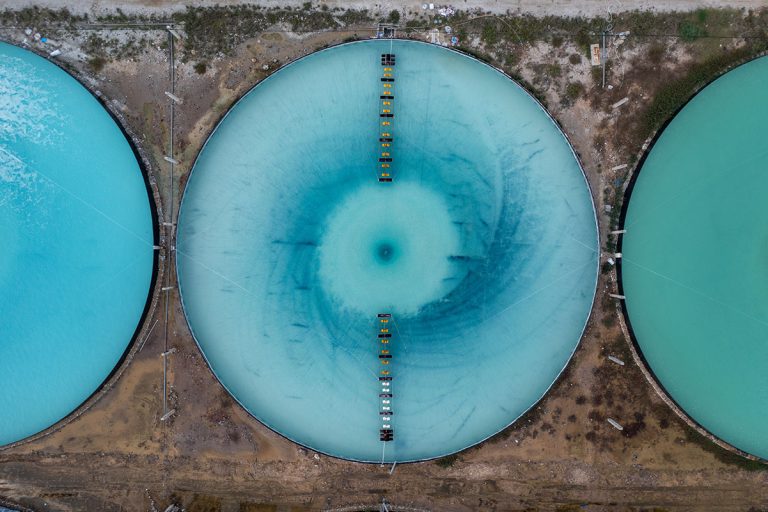Nanoplastics sneak past our defenses
Scientists have begun to unravel how tiny pieces of degraded plastic affect our immune system.
We eat it, drink it and breathe it: plastic is everywhere. The packaging we throw away without a second thought doesn’t just vanish. It eventually breaks down into tiny pieces, called nanoplastics, that find their way into soil, water and ultimately our bloodstreams. Alarming studies suggest the average American will ingest or inhale between 74,000 and 121,000 of these microplastic particles a year.1
Despite their pervasiveness, nanoplastics are difficult to detect and scientists are just beginning to understand how they affect the body.
Recent research co-led by biochemist Lucia Delogu, an associate professor in the Department of Biological Sciences at Khalifa University, suggests that nanoplastics can penetrate our immune cells, raising questions about how they might disrupt our bodies’ defense system.2
“We noticed an increasing number of studies showing that nanoplastics were appearing in water, air, food and even in human blood; but almost nothing was known about what happens when these tiny particles come into contact with our immune system,” says Delogu, who also heads the Immune Nano-lab at the University of Padua in Italy.
“Even though they’re tiny, these particles can pack a punch.”
Lucia Delogu
The team, which included researchers from Switzerland, Turkey and the United States, wanted to find out whether particles could be getting into immune cells and, if so, could they be causing any harm.
To answer those questions, they first had to figure out a way to detect the nanoplastics in the cells. They focused on polystyrene-based nanoplastics, one of the most common types found in the environment. To make the nanoplastic particles detectable, the researchers embedded bits of the rare metal palladium, which shows up clearly in cell scans. They then scanned thousands of immune cells to determine which ones had absorbed the particles and assessed the condition of those cells to see whether they experienced stress or inflammation, for example.
It turns out particle size is important. Overall, the bigger particles were found to be more toxic. “These plastics triggered inflammation and stress responses, and in some cases, reduced the ability of the cells to survive or function normally.”
The discovery “raises serious questions about how they might influence immune function over time,” Delogu says. In collaboration with other United Arab Emirates researchers, Delogu’s team now plans to use the same methodology to study how other types of nanoparticles interact with the immune system.
“Even though they’re tiny, these particles can pack a punch,” says Delogu. “This study is just the beginning,” she adds. Further research is needed to determine just how much trouble these tiny foreign invaders could cause or interfere with the immune system’s ability to fight diseases.
Reference
- https://pubs.acs.org/doi/full/10.1021/acs.est.9b01517
- Fusco, L.; Gazzi, A.; Giro, L.; Schefer, R. B.; D’Almeida, S. M.; Cagliani, R.; Zoccheddu, M.; Uyar, R.; Besbinar, Ö.; Çelik, D.; Yilmazer, A.; Mitrano, D.M.; Orecchioni, M.; and Delogu, L.G., Nanoplastics: Immune Impact, Detection, and Internalization after Human Blood Exposure by Single-Cell Mass Cytometry. Adv. Mater., 37, 2413413, 2025. | Article




